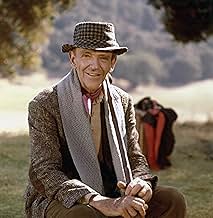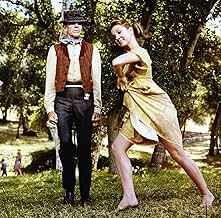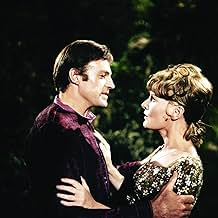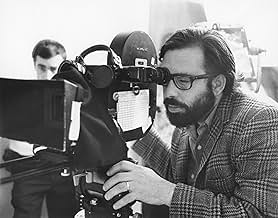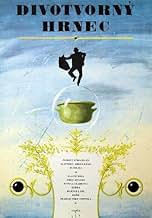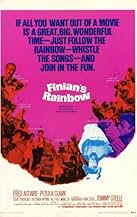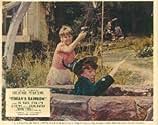ÉVALUATION IMDb
6,1/10
4,3 k
MA NOTE
Ajouter une intrigue dans votre langueAn Irish immigrant and his daughter move into a town in the American South with a magical piece of gold that will change people's lives, including a struggling farmer and African American ci... Tout lireAn Irish immigrant and his daughter move into a town in the American South with a magical piece of gold that will change people's lives, including a struggling farmer and African American citizens threatened by a bigoted politician.An Irish immigrant and his daughter move into a town in the American South with a magical piece of gold that will change people's lives, including a struggling farmer and African American citizens threatened by a bigoted politician.
- Nommé pour 2 oscars
- 1 victoire et 9 nominations au total
Brenda Arnau
- Sharecropper 'Necessity'
- (uncredited)
Charles Carter
- Sharecropper
- (uncredited)
Sterling Clark
- Sharecropper
- (uncredited)
Robert Cleaves
- Geologist
- (uncredited)
Robert Cole
- Sharecropper
- (uncredited)
Willie Covan
- Sharecropper
- (uncredited)
Evelyn Dutton
- Sharecropper
- (uncredited)
Histoire
Le saviez-vous
- AnecdotesMany, including Fred Astaire, blamed director Francis Ford Coppola for cutting off Astaire's feet during filming of his dancing scenes, but it was Warner Bros. who decided, after the filming had been completed in 35mm, to convert the film to the wider 70mm and promote it as a "reserved-ticket roadshow attraction." This was achieved by cropping off the tops and bottoms of the film frame, including some shots of Astaire's footwork.
- GaffesIn the song "Old Devil Moon" as Woody and Sharon dance through the stream, Woody has bare feet and his hands are in Sharon's. In the next shot, he has his shoes on, and it even looks as if his trousers are dry.
- Générique farfeluintroducing Barbara Hancock as "Susan the Silent"
- Autres versionsFilmed in 35mm, Warners decided afterwards to promote it as a "reserved-ticket roadshow attraction" and converted it to 70mm, creating a wider-screen aspect ratio by cropping away the tops and bottoms of the images, and cropping away Fred Astaire's feet during some of his dance scenes. Restored versions show the original aspect ratio.
- ConnexionsEdited into Je me fais mon cinéma (2002)
- Bandes originalesLook To The Rainbow / How Are Things In Glocca Morra?
(1946) (uncredited)
(Main Title)
Played during the opening credits
Lyrics by E.Y. Harburg
Music by Burton Lane
Sung by Petula Clark ("Rainbow") and played by the Warner Bros.
Orchestra ("Glocca Morra") conducted by Ray Heindorf
Commentaire en vedette
Finian (Fred Astaire) and his daughter (Petula Clark) arrive in the fictional Southern American state of Missitucky. There, Finian encounters several problems--including a leprechaun who wants his pot of gold back, a racist senator and the need to marry off his daughter. How all these are worked out are something for you to discover if you decide to see the film.
"Finian's Rainbow" was a very successful play back in 1947. However, because it directly addressed racial prejudice, studios passed on making a film out of it. Efforts to have the play 'cleaned up' to please a wider (in other words, more prejudiced) audience were in vain, as the playwright refused (justifiably) to sanitize the film. However, by 1968, its themes of racial harmony and bigotry were much more acceptable and current--and so the film was finally made. In this sense, the film was very timely. HOWEVER, when it came to the music, by 1960s standards it was VERY corny. In particular, the songs sung by the leprechaun were amazingly bad--with some horrible lyrics. But, the bad lyrics weren't confined to his songs but occasionally popped up among other cast members (such as Clark who sang a line that went 'Zsa-Zsa Gabor-ah' and later when Astaire sung about 'dames'). Because of this, a bit of trimming would have greatly improved the film--making it far less dated and silly. Plus, the bad moments really detract from its central message of racial harmony--a laudable theme that occasionally got lost among the silliness. It also meant a few too many songs--a problem that can hurt any musical. Overall, this can truly be called a mixed bag. While it stars Fred Astaire and I LOVE him in films, this just isn't all that great a film. A time-passer--and that's about all--even though it has some nice moments.
By the way, for years Fred Astaire was NEVER shown dancing in films unless ALL of him was shown. He felt it detracted from the dancing if he wasn't shown from head to toe. Well, he did NOT negotiate such a contract with the folks making "Finian's Rainbow", as he DOES dance and you don't see him from head to toe in songs such as "The Idle Rich". Perhaps this was due to his age and his slowing down a bit--which might explain why this was his last musical.
"Finian's Rainbow" was a very successful play back in 1947. However, because it directly addressed racial prejudice, studios passed on making a film out of it. Efforts to have the play 'cleaned up' to please a wider (in other words, more prejudiced) audience were in vain, as the playwright refused (justifiably) to sanitize the film. However, by 1968, its themes of racial harmony and bigotry were much more acceptable and current--and so the film was finally made. In this sense, the film was very timely. HOWEVER, when it came to the music, by 1960s standards it was VERY corny. In particular, the songs sung by the leprechaun were amazingly bad--with some horrible lyrics. But, the bad lyrics weren't confined to his songs but occasionally popped up among other cast members (such as Clark who sang a line that went 'Zsa-Zsa Gabor-ah' and later when Astaire sung about 'dames'). Because of this, a bit of trimming would have greatly improved the film--making it far less dated and silly. Plus, the bad moments really detract from its central message of racial harmony--a laudable theme that occasionally got lost among the silliness. It also meant a few too many songs--a problem that can hurt any musical. Overall, this can truly be called a mixed bag. While it stars Fred Astaire and I LOVE him in films, this just isn't all that great a film. A time-passer--and that's about all--even though it has some nice moments.
By the way, for years Fred Astaire was NEVER shown dancing in films unless ALL of him was shown. He felt it detracted from the dancing if he wasn't shown from head to toe. Well, he did NOT negotiate such a contract with the folks making "Finian's Rainbow", as he DOES dance and you don't see him from head to toe in songs such as "The Idle Rich". Perhaps this was due to his age and his slowing down a bit--which might explain why this was his last musical.
- planktonrules
- 8 janv. 2013
- Lien permanent
Meilleurs choix
Connectez-vous pour évaluer et surveiller les recommandations personnalisées
- How long is Finian's Rainbow?Propulsé par Alexa
Détails
Box-office
- Budget
- 3 500 000 $ US (estimation)
- Durée2 heures 21 minutes
- Rapport de forme
- 2.39 : 1
Contribuer à cette page
Suggérer une modification ou ajouter du contenu manquant

Lacune principale
By what name was La vallée du bonheur (1968) officially released in India in English?
Répondre

